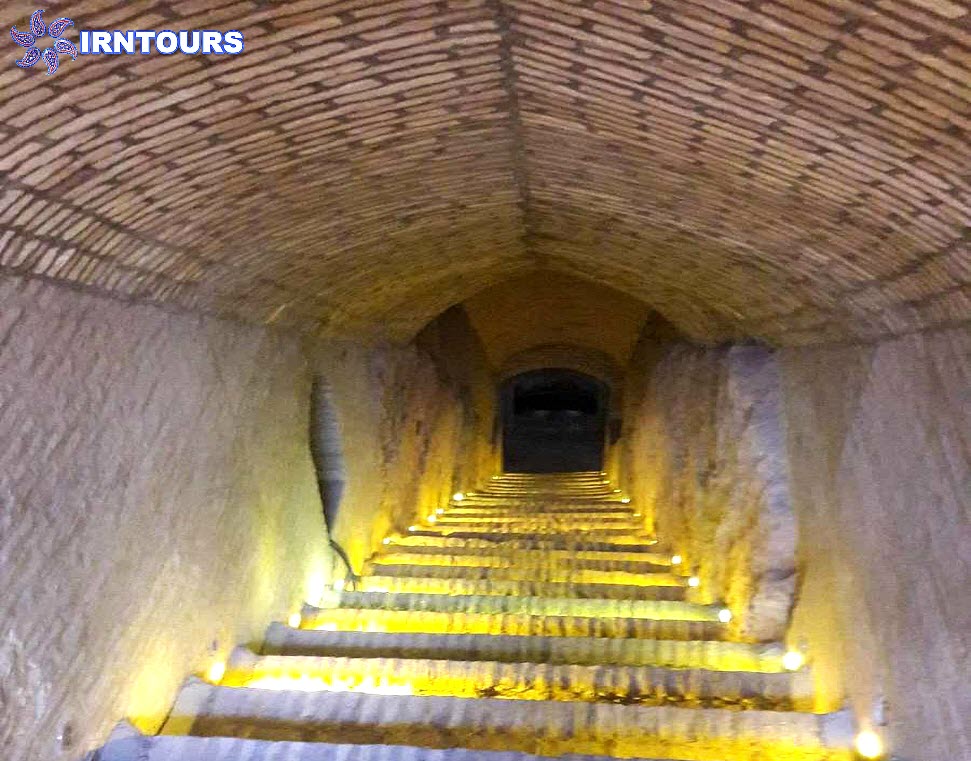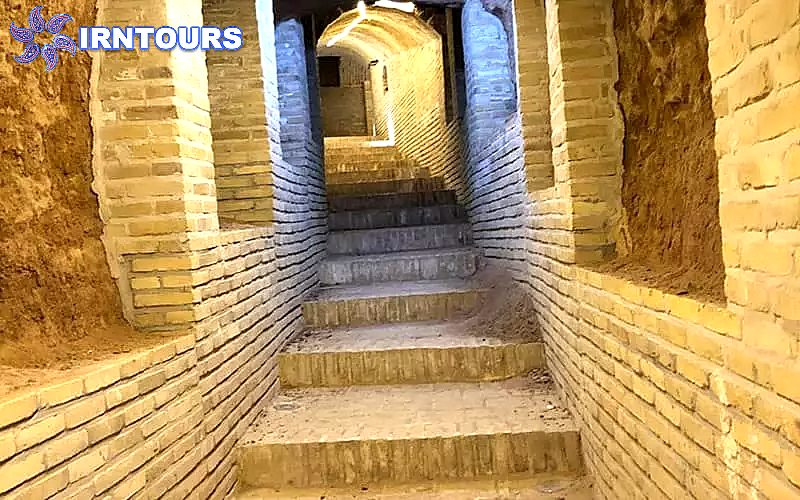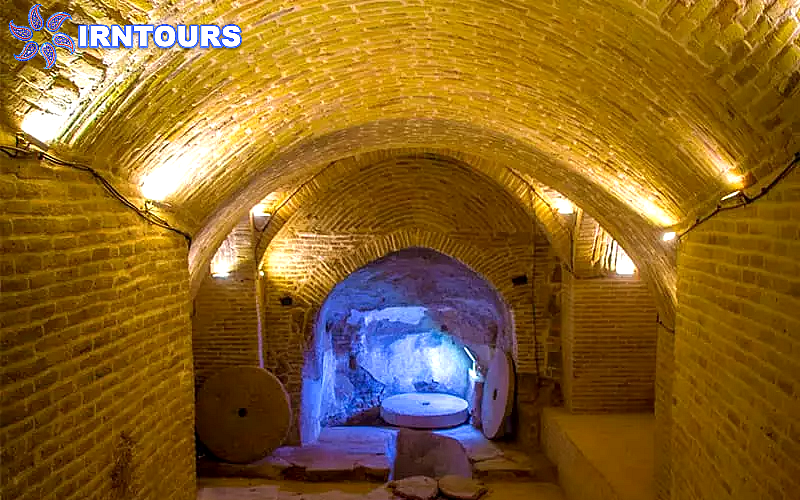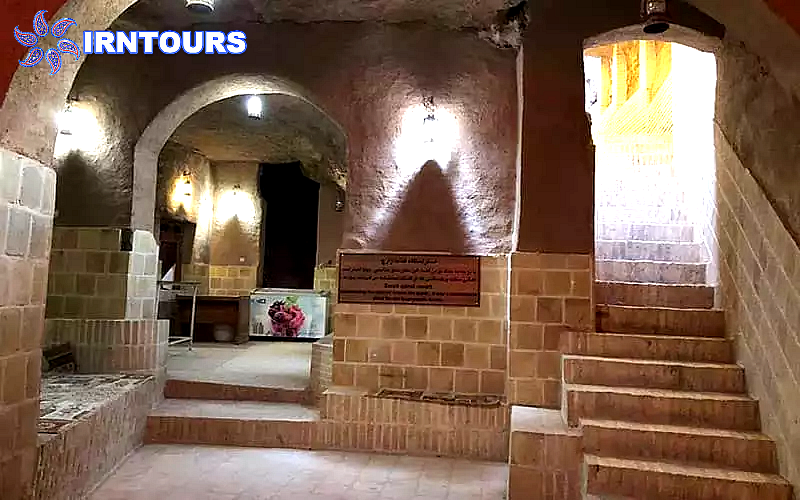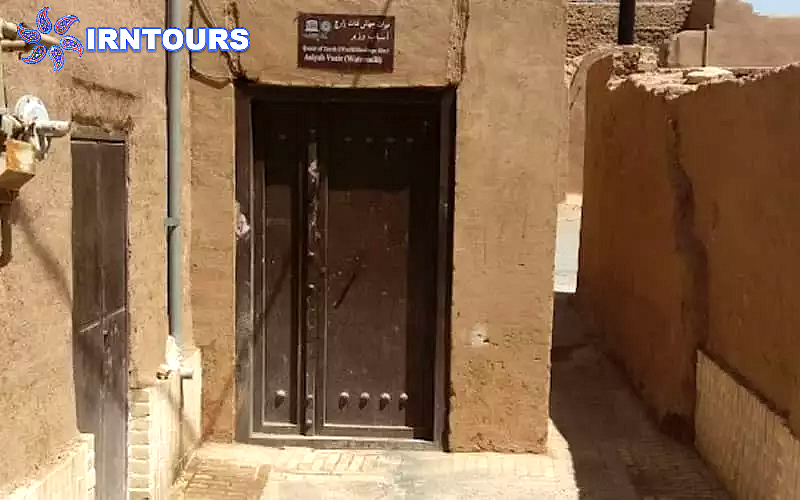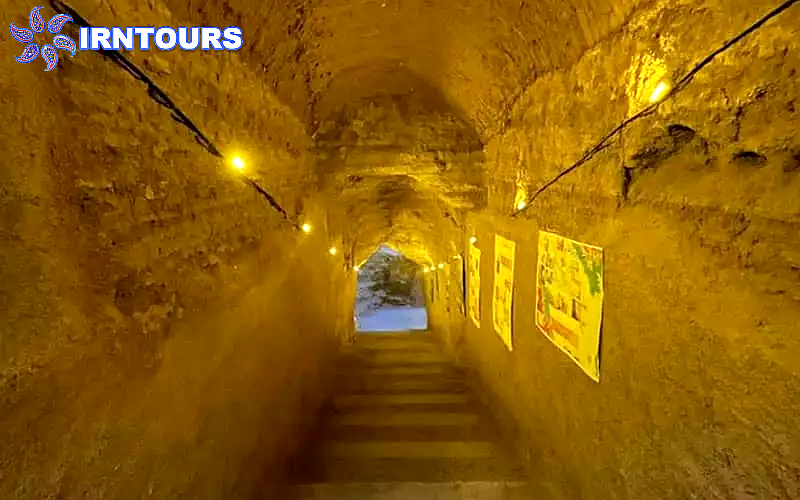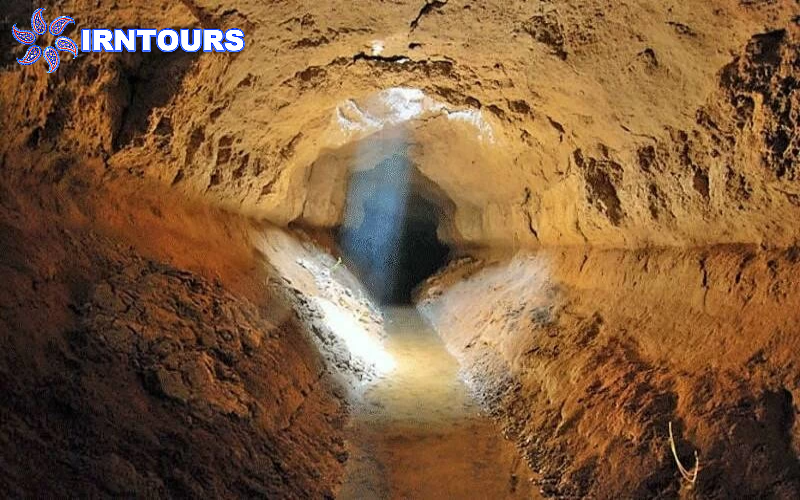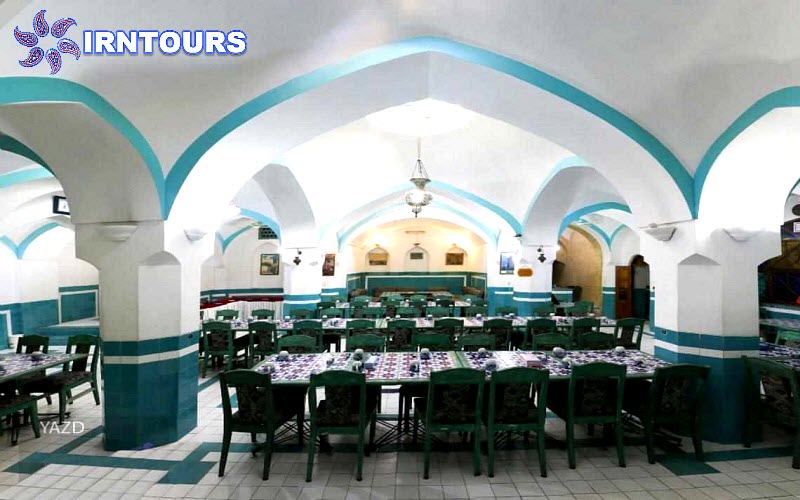About Zarach Aqueduct
Zarach Aqueduct or Zarach Garden Aqueduct is located in Yazd province and is one of the oldest and longest aqueducts in the world with a length of 71 kilometers, 2,115 wells and a history of more than 1000 years. The age of the Zarach aqueduct is attributed to pre-Islam and the Sassanid period. The mentioned aqueduct is not only among the national works of Iran; But in 2016, it was registered as a UNESCO World Heritage Site. To visit this aqueduct, you have to go to Koushk No neighborhood in Yazd city to be able to see a corner of this beautiful structure.
Zarach Aqueduct is one of the sightseeing places of Yazd, and one of its entrances is open to visitors on Seyed Golesorkh Street and in Koushk No neighborhood. In fact, by passing through the winding alleys in the historical context of Yazd, you will reach the longest Zarch aqueduct.
- Address: Yazd Province, Yazd City, Seyyed Golsarakh St., Koushk No neighborhood
What is an aqueduct ?
The technical aqueduct is the result of climatic conditions and, of course, the intelligence of our ancestors. Thousands of years ago, the ancient Iranians succeeded in inventing efficient and low-consumption ways to transfer water to the surface of the earth and irrigate agricultural lands by digging wells in order to explore water in the heart of the earth and use it in desert areas. These methods led to the development and revival of a large part of dry lands in the central plateau of Iran and established the foundations of a civilization that surpassed other civilizations not only economically, but also from a social and cultural point of view.
Introduction of Zarach aqueduct
Zarch aqueduct is more than 1000 years old and its excavation dates back to before Islam. The length of the Yazd Zarach aqueduct is from Fahraj mountains to Zarach, which is about 71 kilometers, and for this reason it is known as the longest aqueduct in the world. There are more than 2,115 wells on the route of Zarch aqueduct of Yazd. This aqueduct has three separate branches or underground tunnels named “Shor, Shirin and Ibrahim Khovidaki”. The two branches of Ibrahim Khoidki and Shirin are the dried branches of this old aqueduct in Zarch, and only the 71-kilometer-long salt branch has water today, and its water flow rate is 60 liters per second upstream of the aqueduct and 28 liters per second in Mazhar aqueduct.
The branch of Shur Qanat Zarach passes through the foot of Yazd Jame Mosque. This footpath has about 60 steps that allow access to the water of the aqueduct. The reason for the salinity of the water of this branch is that Maderchah is located in the brackish water area and its water is brackish compared to the other two branches. In different parts of the aqueduct, there are skylights that played an important role in this structure.
Zarach aqueduct was registered in the list of national monuments of the country on July 7, 2005, and at the 40th UNESCO World Heritage Summit held in Istanbul on July 15, 2016, Zarch aqueduct was included in the UNESCO world list as the longest aqueduct of Iran.
History of Zarach Aqueduct
About the age of the Zarach aqueduct, like other Iranian aqueducts, there is no documented evidence, and to determine the age of this aqueduct, one must resort to historical sources, archaeological excavations, and the history of related structures. One of the evidences that can indicate the longevity of the Zarach aqueduct is determining the age of the city of Zarach; Where there is a manifestation of this aqueduct. This requires archaeological follow-up by the Cultural Heritage Department.
In the book Tarikh al-Muzaffar written by Mahmoud Kattabi, Tarikh al-Muzaffar by Ahmad Katab, Yazdnameh Iraj Afshar and Tarikh Jafari, the authors believe that Zarch is one of several villages built by Amir Mobarezuddin and his relatives.
One of the features of Zarach aqueduct is the square section of its wells compared to other counterparts that have an elliptical or circular section. The history of digging such wells dates back to Zoroastrians.
Structures related to the Zarach aqueduct
sustainable : Payab, jo or pakne, is a sloping corridor that is dug in the heart of the earth, and in this way, it is possible for people to use the flowing water of the aqueduct. This corridor was always built perpendicular to the path of the aqueduct to prevent the possible collapse of the aqueduct gallery. In the past, all the payabs had ponds and were a place for washing, bathing and supplying water. Of course, the use of water was not only for providing water for washing and sometimes for drinking; But in addition to that, it had other functions that were woven into the social structures of the city, and among them, it can be used to show the demarcation of social classes, wealth and authority, creating a temporary shelter or stronghold during insecurity, providing a place for gatherings and social interactions and exchanging information and He also mentioned a cool place to escape from the hot summer days. The internal environment of Payab has a constant temperature between 28 and 29 degrees centigrade in all seasons of the year due to the feature of the underground building and the proximity to the water of the aqueduct.
When the aqueducts passed under cities or desert villages, it was possible to find a winding path and constantly deviate to the left and right. In this way, more houses would have the chance to have footpaths and access to qanat water. 38 aqueducts have been carved on the Zarch aqueduct in Yazd city, and the first one is the Golkar aqueduct located on Shahid Asizadeh Boulevard, which was restored by Haj Mohammad Ali Golkar about 100 years ago, and his name was preserved on the aqueduct. The second payab is Goudars Payab or Shahriari Pit, adjacent to Goudars Hospital, which was restored 150 years ago by Arbab Mehraban. The last tributary is Koushk Nou tributary in Koushk No neighborhood, the water entering Wazir’s mill passes through this tributary.
the mill : In Yazd, almost all mills work with aqueduct water, and without using them, where it was not possible to use other driving energy such as wind or river, people had to turn wheat into flour with manual mills. The work of the mill is based on the energy obtained from the water that flows from the aqueduct into a well called Tanureh Hedayat, accumulates there, and then exits from the end of the tanure through a narrow channel and rotates the blades of the mill with high pressure. The rotation of the blades leads to the rotation of the stone on the mill and finally the grains between the two stones turn into flour.
Wazir mill : According to the available oral history, the minister’s mill was built in the Al-Muzaffar era by the order of the then ruler inside the city walls on the Zarch aqueduct. This mill was placed inside the fence so that if the fences of the city were closed due to conflict and war, people would not have problems. The Wazir mill was still standing until 65 years ago and supplied the flour needed by the people. The strategic importance of this mill can be understood due to the width of the stairs where two four-legged animals could easily pass each other, the size of the mill space and its proximity to the city wall.
Zarach aqueduct route : The source of Qanat is near the village of Fahraj, which enters Yazd city after passing through villages such as Khoidek, Dehnu, and Akramiyeh and passes through various neighborhoods of the city, including Amir Chakmaq Square. After passing through Jame Mosque, the Qanat water leaves Yazd city and moves towards Zarch.
Zarach Aqueduct Water Management
Management, preservation, maintenance, distribution and water distribution of the Zarch Aqueduct is the responsibility of the Zarch Aqueduct Council, which has five members and is elected by all the owners and users of the aqueduct. The Qanat Council nominates one person as an authorized representative for one year to get help from all the owners and users of their Qanat and also to be the link between the farmers and the relevant departments. The said representative employs foreman, foreman and aqueduct worker for the protection and maintenance and digging of the aqueduct in order to efficiently perform any required operation and pay the wages of the workers.
Two people are elected by the Qanat Council as Mirab for the distribution and distribution of Qanat water, one at Sarcheshme and the other at Tude Zarach for one year. Mirab delivers the water to the farmers by referring to the water offices of the program and according to the ownership amount of each person and according to their turn. The spring of Zarch has water 6 days a week and the place of Tudeh Zarch has water 9 days a week. Also, the salary of Mirab, which is known as “dam”, is delivered from the share of agricultural water once every 15 days in the amount of one sip of water (for 11 minutes).
The Current State of the Zarch Aqueduct
Until half a century ago, the water flow of the Zarach aqueduct was more than 150 liters per second; But due to the indiscriminate digging of deep and semi-deep wells in the Qanat watershed, its water supply has been greatly reduced. The development of the city of Yazd during the past few centuries, the construction of buildings in the aqueduct, the collapse of the roof and the wall of the aqueduct and the bars of the wells, the settling of sewage into the aqueduct and the installation of sewage pipes in some areas in the corridor of the aqueduct have caused many problems for this old aqueduct. Is.
Even now, 30 kilometers of the Zarch aqueduct passes under the city of Yazd, and in two places of the old structure that do not have sewage, some residential houses have directed their sewage into the aqueduct. With some measures, this problem has been minimized; But it continues. Directing the sewage to the aqueduct has even caused the creation of carbon dioxide gas in the aqueduct, which has made dredging difficult and dangerous for the residents.
Experts believe that the Zarach aqueduct has resisted despite droughts and climate changes and has not yet dried up, and by digging and dredging the entrance of this aqueduct in Khoidek and Fahraj, its current flow can be increased.
Tips about Zarach aqueduct
- The lighting of Payab Wazir has been done with 12-volt lamps to make it safe for tourists to enter.
- One of the remarkable points of this aqueduct is the paths that have reached each other with a height difference of 10 meters; While the level of this aqueduct is zero and it is surprising for visitors how this level difference is managed.
- It is a 400-meter walk from the beginning of entering the Wazir mill to the end, and it takes 120 steps with a gentle slope of 12 cm to reach the aqueduct. Railway traverse has been used to reconstruct the stairs.
- This aqueduct has advanced 20 kilometers since 1340 AH, and as the underground table has gone down, the aqueducts have also sunk into the water.


